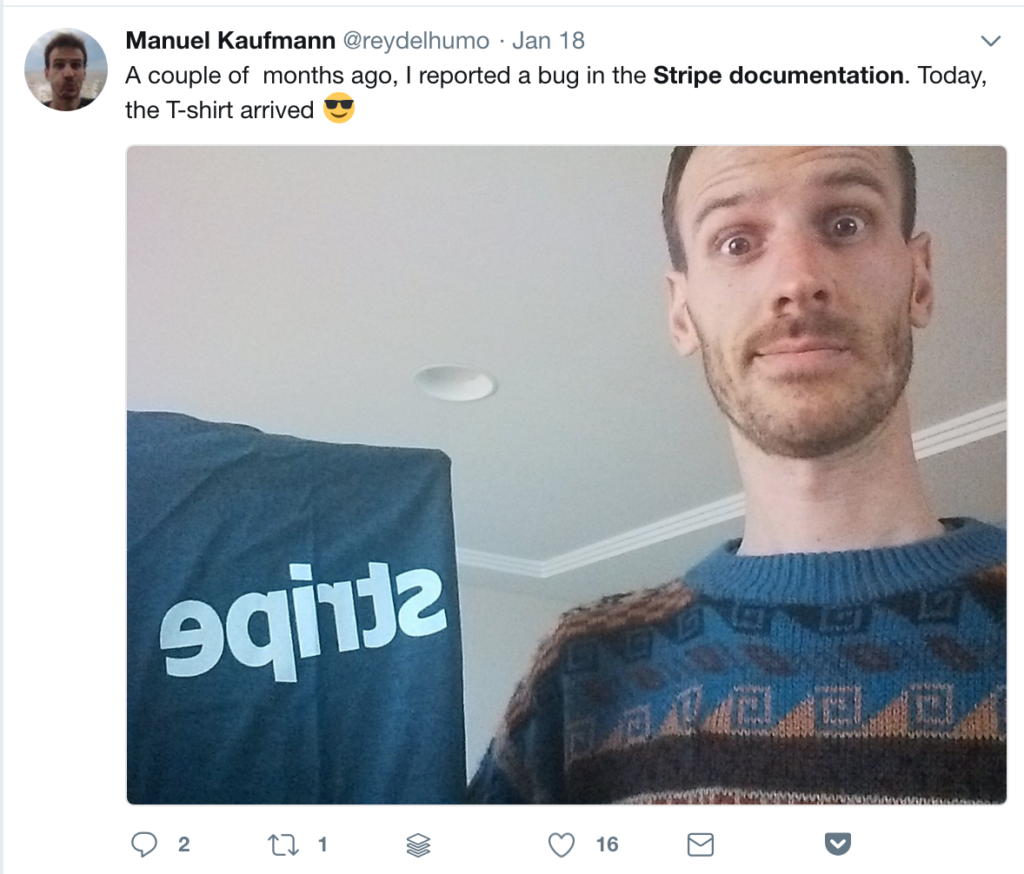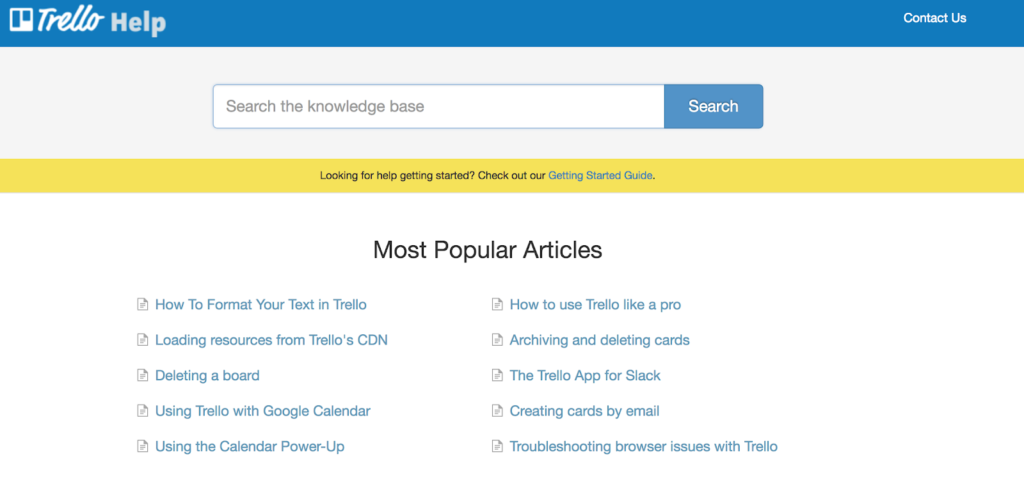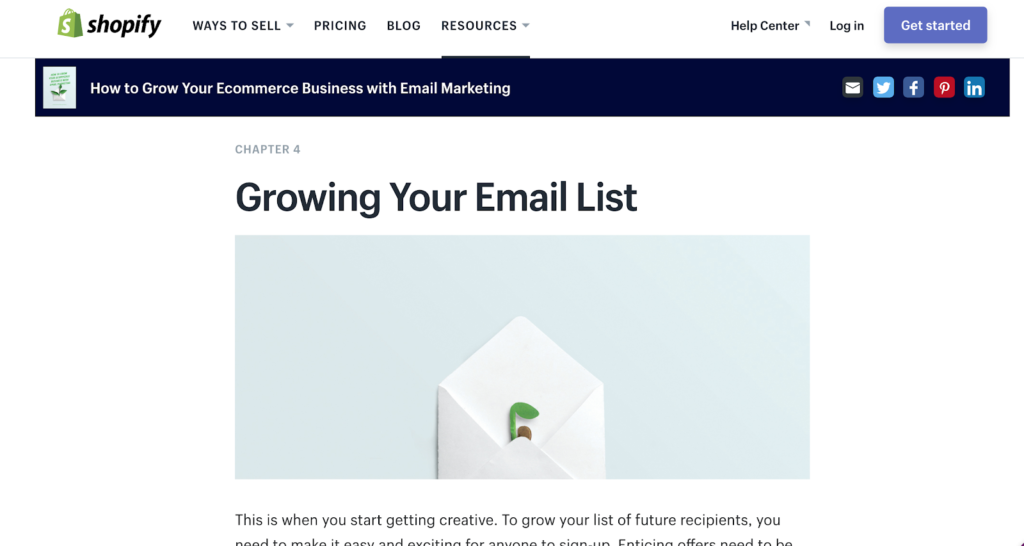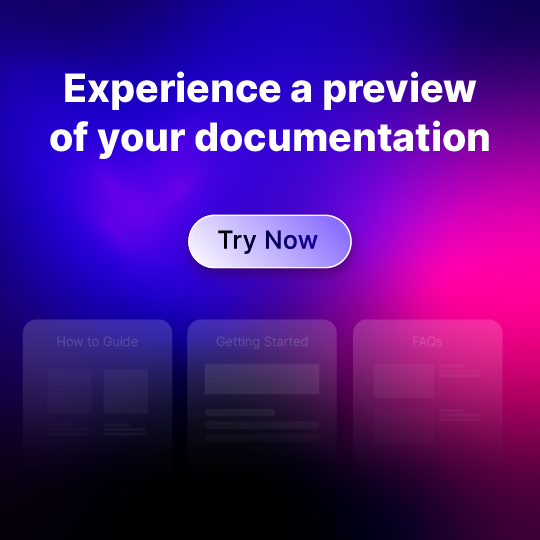Product marketing. Product documentation. One seems focused on business growth. The other is often treated more like an annoying cost center.
Did you know that combined together as product documentation marketing they can make a powerful addition to your arsenal?
It’s not only useful in launching your shiny new product but plays a big role in those regular software updates where you can show you’re consistently adding value to your customers. Documentation is your silent partner in demonstrating this value.
It’s important because SaaS companies are all about relationships. In a subscription company, continually marketing to your existing customers is essential.
Product documentation not only deepens your relationship with your customers but talks to them when you’re not there.
Read on to find out EXACTLY how you can use documentation to market your SaaS.
Implement a knowledge base system today and reduce your customer support cost by 67%
Signup now
Attracting new customers
Potential customers will often decide whether to use your software based on the documentation. There’s only so much a flashy product demo or video will tell them.
Especially in B2B software sales, there are often strict requirements that have to be met before a customer can be convinced to invest in your product. There are long procurement chains where multiple parties must be satisfied.
Documentation allows them to dig down into the details, and also shows you will provide lots of self-service support. It’s especially important when marketing to that legendarily tough customer: developers.
As Chief Technology Officer and SaaS entrepreneur Matt Hackett says:
“Well-indexed, example-filled, hyperlink-saturated documentation is evidence that my team won’t have to struggle to use your tool.”
For API-based SaaS products (like Stripe, Twilio etc), documentation is a cornerstone component. Documentation is also the most important part of your marketing strategy after the landing page.
Stripe’s Method
Having made the time to invest in a knowledge base also suggests your product is going to be around for a long time. Your startup is not likely to collapse in a few months, leaving your customer high and dry.
We’ve written a whole post on how Stripe is using product documentation as a way to supercharge their sales. Developers love using their documentation so much they become advocates for the brand. A social share is worth a thousand words from a brand.

This developer just has to tell the world how much he loves Stripe docs.

An engineering lead praising Stripe’s docs.

It’s not just about documentation – Stripe reward bug reports with swag, building even more customer loyalty.

This guy is an entrepreneur, showing that even non-developers appreciate Stripe docs and are willing to share.
Actionable tip: Use documentation to demonstrate to new customers how much your SaaS company values them. Get really detailed to appeal to technically-minded customers and persuade them your software is well-supported.
At the same time, keep your documentation as simple and relevant as possible so you don’t waste your customer’s precious time.
Simple and intuitive knowledge base software for your business needs
Learn more
Make it easy for customers to report bugs in your docs and even reward them for doing so with free merchandise. You’ll be well on your way to building an army of loyal fans like Stripe’s.
Educating existing customers
As we mentioned earlier, SaaS businesses must also market to their existing customers. Customers are busy and don’t always have time to explore your product fully. This means they aren’t getting the most value out of your software and are more likely to churn.
Your product has lots of features they may not know about yet – but if they did, would prevent them from churning. Well-placed documentation shows them features that might be useful to them, or reminds them about things they’ve forgotten.
Good documentation doesn’t really feel like documentation – it’s a way to hack their workflow to get more done.

Trello is a great example of providing product documentation to customers that helps them get more out of the product. It is such a complex (and yet simple) tool that the majority of customers aren’t using the majority of its functions.
When dealing with SaaS products you are generally trying to upsell those premium versions of the product. Your customers will have to be convinced of the benefits before they part with more money. Documentation can tell them about fancy new features that they might like to try, and how it will boost their productivity.
The more customers see the value in your product, the more they will be likely to upgrade to a paid or higher-tier plan.
Actionable tip: Serve your customers educational documentation at strategic times to help them get more out of your service. Perhaps create a weekly tradition of sending out one knowledge base post a week, structured according to a theme.
Existing customers can be sensitive about being taken for granted, so consistently producing helpful documentation to support your product is one way to boost loyalty. You’re showing you care about your existing customers instead of just pouring the majority of your resources into shiny new product marketing.
Also read: Strategic Approach to Use Knowledge Base as Marketing Tool (5 Simple Steps)
SEO benefits of product documentation
Aside from the warm fuzzies you’ll give your customers with great documentation, it also has a tangible impact on your knowledge base SEO strategy.
More potential customers will be exposed to your business through product documentation that is marketed correctly. This is an example of using content marketing to reach audiences in their natural environment.
Through discovering your documentation, they could be persuaded to switch to your product – if the docs are high quality enough. This means at least some of your knowledge base has to be accessible to new users, as well as deep-dive specialist content. This is a very brief introduction to what’s known as a marketing funnel, starting users well on your way to signing up for a trial of your software.
The idea behind content marketing is for your content to look natural, and blend in with the user’s environment. This means no hard sell, but simply providing content that helps users with their problems. SEO is the engine behind content marketing, ensuring a steady stream of traffic sees your content.
To use product documentation for content marketing, you’ll need to make sure your knowledge base is public rather than private – indexable by search engines rather than sitting behind a gate. You must format it for SEO using keywords, interlinking, and metadata.
One example of a company using product documentation for marketing really well is Shopify. They have optimized their documentation for search using long-tail keywords for topics like ’email marketing list’.
Check out How to Create Product Documentation For Your SaaS:
An Example Google Search
We type in ‘how to build an email marketing list‘ in the search bar of Google.

Then we click on one of the results that appear on the first page – Shopify’s guide on how to build and grow an email list.
This takes us to their comprehensive guide on every aspect of growing an email list, which relates to using their software but is also relevant for non-customers.

It’s formatted in a way that looks almost like a blog post with engaging imagery and lots of actionable examples.
Most importantly, at the bottom of the page is a link to sign up for a free trial of Shopify.

Actionable tip: Define the niche that your product documentation falls into. For example, if you’re selling email marketing SaaS, this will be useful to other people searching for help with email marketing. Make sure some of your documentation corresponds to typical problems your potential customers may be having.
Once you’ve attracted new potential customers through your doorway, you can optimize your page with internal links and good navigation so they explore more of your content. This all improves the ranking of your documentation in a virtuous circle and ensures more audiences discover your content.
The type of content users are searching for
Your product documentation also presents valuable insight into the type of content your users are actually searching for in your knowledge base.
Mine your documentation analytics to see where your users are bouncing, or spending the most time. This will give you insight into their psychology and the way they’re using your product.
You can either do this in Google Analytics if you have set it up for your knowledge base, or the analytic dashboard in your knowledge base software interface. Find out which articles are most-viewed, most linked-to, or most commented on.
Not only that. If particular pieces of content are getting a substantial amount of organic traffic from external search engines, this reveals an area of potential growth for your product. Use this to feed into your product road map and highlight certain features to potential customers.
Actionable tip: Look at the common terms your users are searching for in your knowledge base. This will show you their pain points, how they’re using your product, and how to market effectively to them.
Document360 is SaaS based knowledge base software. It comes fully prepared with extensive analytical capabilities so you can evaluate how your content is performing. Sign up for the free trial.
Augment your product launch
A product launch is all about creating buzz with new customers, persuading them to use your new product and collecting valuable feedback.
To have a successful launch, you need to have a Minimum Viable Product. This includes not only your software but also making sure it has an easy setup, allows integrations, has good usability – PLUS includes documentation and online guides.
You can also have a documentation launch. If you launch a new knowledge base or revamp your existing portal, this is an opportunity to create excitement with your customers. It shows you have invested in developing your product and creating value.
While you’re still in beta you may not have time to code all of the potential features of your product. Comprehensive documentation can help build a picture of the future product and add fuel to your SaaS product launch.
According to The Startup on Medium:
“In SaaS terms, you should’ve worked not only on technology but also on things like integrations, easy setup, documentation, usability, online guides and a whole bunch of things.”
Documentation helps get your product launch-ready.
Actionable tip: avoid using marketing copy in your documentation at all costs – especially if it’s aimed at developers. Your language should be plain and clear, while subtly conveying some of your company’s brand in the tone and design choice of your docs. Ditch the sales psychology and focus on educating people.
If you’re creating documentation for a launch this is a prime chance to let your company’s mission shine through. Meaning is subjective and different people will interpret your product in a variety of ways. Documentation helps you control the narrative and inspire other people with your vision.
Creating a community
Many knowledge bases are interactive and allow users to comment. Some even go so far as to crowdsource their documentation and allow user contributions. Your documentation portal becomes a hybrid of a knowledge base and user forums.
Encouraging user interaction is a decision that is particular to each individual company, but your knowledge base can be a good way to build community among your users. It’s important to remember that a community isn’t going to flourish by itself and you have to put the work into building it. At worst, it could backfire and you end up with a resentful group of very vocal users.
At best, a community surrounding your product is an extension of your company’s brand. You can’t force people to participate, but that’s why – if you’re successful – it’s such a powerful indication of the value of your product. They will induct new users into the community and help them with issues to do with your software.

The Atlassian community is more than a million-strong.
Actionable tip: Experiment with encouraging your customers to comment on your documentation and open a dialogue. Task your agents with replying to comments and educating users about your software. Find some way to reward customers for reporting issues or giving feedback.
Your brand is your identity. Carry your brand identity into your knowledge base
Request a demo
Go forth and market!
Telling people about your product, what it can do, and your company’s vision is the best way to do marketing. If your product is technical, like SaaS, documentation is a core way that customers will expect to learn about it.
Since documentation is where people expect to learn. It’s not like a traditional marketing medium where a person gets values the strength of your copy.
Documentation content quality is measured based on how well you understand your target customers and how it helps to solve their problems. Copy is secondary.
This is your chance to connect with potential customers and existing ones to show them how amazing your SaaS is.
Document360 provides all the capabilities you need to create outstanding documentation for your SaaS product. Take advantage of your free trial now.





 –
– 

